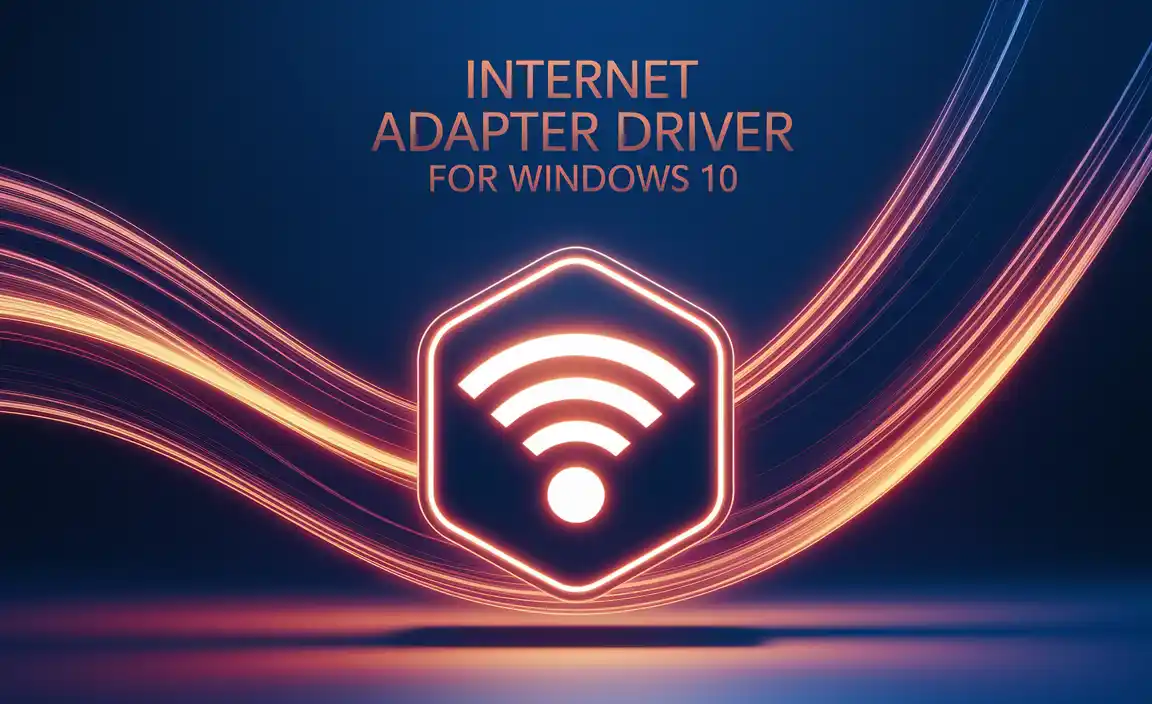Here’s your essential guide to solar laptop chargers. Yes, you can power your laptop with the sun! This guide explains how solar chargers work, what to look for, and how to use them safely, making it super easy to stay charged when you’re off the grid.
Imagine this: you’re out exploring, working remotely from a scenic spot, or dealing with a power outage, and your laptop battery is blinking red. It’s a common frustration, right? Relying solely on wall outlets can limit where and how you can use your tech. But what if you could tap into a clean, endless power source right above your head – the sun?
A solar battery charger for your laptop might sound like something from the future, but it’s a real, practical solution for anyone who needs power on the go. Don’t worry if you’ve never used one before; this guide is designed for absolute beginners. We’ll break down exactly how these chargers work, what features matter most, and how to pick the perfect one for your needs. Stick around, and you’ll be powering up with sunshine in no time!
What is a Solar Laptop Charger?
Simply put, a solar laptop charger is a device that uses sunlight to generate electricity, which then powers or charges your laptop. Think of it as a portable, sun-powered outlet. It’s made up of a few key parts:
- Solar Panels: These are the most visible part, designed to catch sunlight. They convert solar energy into direct current (DC) electricity.
- Charge Controller: This is like the brain of the operation. It regulates the flow of electricity from the solar panels, protecting your laptop and the charger’s components from overcharging or voltage spikes.
- Power Output: This is where you’ll connect your laptop. It could be a standard AC outlet (like your wall socket) or a DC output that connects directly to your laptop’s adapter. Some might also have USB ports for charging other devices simultaneously.
The magic happens when sunlight hits the panels. The panels create electricity, which then travels through the charge controller. The controller makes sure the electricity is stable and safe before it’s sent out to power your laptop. It’s a clean, renewable way to keep your essential devices running, especially when you’re away from traditional power sources.
How Does a Solar Laptop Charger Actually Work?
The core technology behind solar laptop chargers is the photovoltaic (PV) effect. When sunlight, which is made of tiny energy packets called photons, strikes the solar panels, it excites electrons within the panel’s semiconductor material (usually silicon). This movement of electrons creates an electric current – specifically, DC electricity.
This DC electricity then needs to be managed. That’s where the charge controller comes in. If the charger is designed to power your laptop directly via its AC adapter, the DC electricity might be converted into alternating current (AC) electricity, similar to what comes from a wall socket, using an inverter. If it outputs DC power, it might simply adjust the voltage to match your laptop’s requirements. This regulated power is then delivered to your laptop, either to run it directly or to charge its battery.
For a more in-depth understanding of solar energy, you can check out resources from the U.S. Department of Energy, which provides excellent information on solar power technologies and their applications: U.S. Department of Energy – About Solar Energy.
Why Would You Want a Solar Laptop Charger?
The benefits of using a solar laptop charger are numerous, especially for those who value independence and sustainability. Here are a few key reasons:
- Portability and Freedom: This is the biggest draw. Whether you’re camping, hiking, or simply working from a park, you aren’t tethered to a wall. You can power your laptop virtually anywhere with sunlight.
- Emergency Preparedness: During power outages or natural disasters when the grid is down, a solar charger can be a lifesaver. It ensures you can still communicate, access information, or work if needed.
- Cost Savings: While the initial investment can be higher, using solar power means you’re not paying for electricity from the grid. Over time, this can lead to savings, especially if you use your laptop extensively outdoors or off-grid.
- Environmental Friendliness: Solar power is a clean, renewable energy source. By using a solar charger, you’re reducing your carbon footprint and contributing to a more sustainable future.
- Independence: For remote workers, digital nomads, or anyone living partially off the grid, solar chargers provide a reliable way to maintain power without constant reliance on traditional infrastructure.
Types of Solar Laptop Chargers
Not all solar laptop chargers are created equal. They come in various forms, each suited for different needs and situations:
1. Foldable Solar Panel Chargers
These are the most common type for portable use. They consist of multiple solar panels that fold up into a compact, backpack-friendly package. When unfolded, they present a larger surface area to capture sunlight.
- Pros: Highly portable, good power output when unfolded, flexible positioning to catch the sun.
- Cons: Can be bulky when unfolded, requires manual setup and positioning, may not have integrated battery storage.
2. All-in-One Solar Power Banks
These units combine solar panels with a built-in rechargeable battery (power bank). You can charge the internal battery using sunlight, and then use that stored power to charge your laptop or other devices anytime, even at night.
- Pros: Convenient all-in-one solution, provides power even when the sun isn’t shining, often includes multiple output ports (USB, DC, sometimes AC).
- Cons: Recharging via solar can be slow, the integrated battery adds weight and cost, panel size might be limited by the unit’s form factor.
3. Solar Briefcases/Bags
These are more integrated solutions where solar panels are built directly into a laptop bag or briefcase. They offer protection for your laptop and a built-in charging capability.
- Pros: Seamless integration, professional appearance, keeps panels protected when not in use.
- Cons: Less flexible positioning of panels, often more expensive, might offer less total panel surface area compared to foldable types.
What to Look for in a Solar Laptop Charger
Choosing the right solar charger can feel a bit overwhelming. Here’s a breakdown of the key features you should consider to make an informed decision:
1. Power Output (Watts)
This is perhaps the most critical factor and is measured in watts (W). Your laptop requires a certain amount of power to run and charge. Check your laptop’s original AC adapter – it will state the wattage (e.g., 45W, 65W, 90W). You’ll want a solar charger that can provide at least this much power.
Tip: It’s always better to have a charger with a slightly higher wattage than your laptop needs. This ensures it can handle charging even when your laptop is in use, and it won’t be working at its absolute limit, which can be inefficient.
2. Portability and Design
How will you use the charger? If you’re hiking, you’ll want something lightweight and compact that folds easily. If it’s for car camping where space isn’t as tight, a slightly larger, more robust unit might be fine. Consider how easy it is to set up, adjust, and pack away.
3. Durability and Weather Resistance
Solar chargers are often used outdoors, so they need to withstand the elements. Look for chargers made with robust materials that are resistant to scratches, dust, and water (check for IP ratings, like IPX4 for splash resistance). A durable design means your investment will last longer.
4. Integrated Battery Storage
Does the charger have a built-in power bank? This is a huge advantage. It allows you to store solar energy generated during sunny periods and use it to charge your laptop later, such as at night or on cloudy days. The capacity of this battery is measured in milliamp-hours (mAh) or watt-hours (Wh).
5. Output Options
Check the types of ports available. Most laptop chargers will have a DC barrel jack output (you might need to check if the correct adapter tip for your laptop is included or available separately). Many also include USB-A and USB-C ports, allowing you to charge your phone, tablet, or other gadgets simultaneously. USB-C Power Delivery (PD) is particularly useful for newer laptops.
6. Efficiency
Solar panel efficiency measures how effectively the panel converts sunlight into electricity. Higher efficiency panels (typically 20% or more) will generate more power from the same amount of sunlight, meaning they can charge your laptop faster or require a smaller panel size for the same output. Keep in mind that actual efficiency can vary based on weather and angle to the sun.
7. Included Accessories
Does it come with necessary cables? Does it include a variety of adapter tips for different laptop models? Some chargers might come with built-in kickstands to help angle them towards the sun, or carabiner loops for easy attachment to a backpack or tent.
Comparing Solar Laptop Chargers vs. Other Power Solutions
Let’s see how solar chargers stack up against other ways to keep your laptop powered when you’re away from home.
| Feature | Solar Laptop Charger | Traditional Power Bank | Car Inverter/Charger |
|---|---|---|---|
| Power Source | Sunlight | Pre-charged electricity | Vehicle’s car battery |
| Availability | Dependent on sunshine | Limited by stored charge | Requires vehicle to be running or not drain the battery too much |
| Environmental Impact | Very low (renewable) | Moderate (recharging often uses grid electricity) | Moderate (uses fossil fuels to power vehicle) |
| Portability | High (especially foldable types) | Very High | Low (tied to vehicle) |
| Use Case | Off-grid, camping, emergencies, remote work | Everyday charging on the go, travel | In-vehicle power, short-term power needs when stationary |
| Key Advantage | Unlimited renewable power source | Instant power, reliable charge level | High power output available from vehicle |
A traditional power bank is a great companion for everyday charging, but it eventually runs out of juice and needs to be recharged from a wall socket. Car chargers or inverters are convenient if you’re in your vehicle, but they rely on your car’s system and aren’t practical for remote locations. Solar chargers offer true independence, though they do require patience and sunlight.
How to Use Your Solar Laptop Charger Safely and Effectively
Using a solar charger is generally straightforward, but following these tips will help you get the most out of it while staying safe.
1. Placement is Key
Solar panels need direct, unobstructed sunlight to work best. Position your panels facing the sun. The ideal angle changes throughout the day and depends on your geographic location and the season. In the Northern Hemisphere, aim the panels generally south, and in the Southern Hemisphere, aim them north.
Avoid shadows. Even a small shadow on one part of a panel can significantly reduce the overall power output.
2. Understand Charging Times
Solar charging is not as fast as plugging into a wall. Charging times depend on several factors:
- Sunlight Intensity: Bright, direct sunlight is ideal. Cloudy or hazy conditions will slow things down considerably.
- Panel Size and Efficiency: Larger or more efficient panels produce more power.
- Laptop’s Power Draw: If your laptop is running demanding applications, it will use more power, and charging will be slower or might not happen at all if the solar output isn’t high enough.
- Angle and Orientation: As mentioned, proper positioning is crucial.
Be patient! For a significant charge, you might need several hours of good sunlight.
3. Protect Your Equipment
It’s wise to charge your laptop while it’s not in heavy use, or to charge it when it’s off or in sleep mode. This minimizes the power draw and allows the solar charger to charge the battery more efficiently.
If your solar charger has an integrated battery, charge that battery whenever you have good sunlight. This stored energy can then be used to charge your laptop later, providing more flexibility. For tips on battery health in general, including for your devices, see the Guidance for Photovoltaic System Installers from the National Renewable Energy Laboratory (NREL), which gives insights into solar system performance.
4. Check Connections
Ensure all cables are securely connected. Loose connections can lead to inefficient charging or no charging at all. If your charger came with multiple adapter tips for your laptop, make sure you’re using the correct one. Using the wrong tip could potentially damage your laptop or the charger.
5. Safety First!
Voltage Matching: Always ensure the output voltage of the solar charger (or its adapter tip) matches your laptop’s required input voltage. Most solar chargers will specify compatibility with common laptop brands or voltage ranges. If in doubt, consult your laptop’s manual or the charger’s specifications.
Avoid Overheating: Don’t leave your laptop or the solar charger in direct, intense sunlight for prolonged periods, especially if the device is off and not actively cooling itself. Overheating can damage electronics. Consider using a thermal mat or placing them in a shaded area once charged.
Water and Damage: While some chargers are weather-resistant, most are not fully waterproof. Protect them from heavy rain or submersion. Be careful not to puncture or bend the solar panels excessively, as this can damage the delicate cells within.
Step-by-Step: Charging Your Laptop with a Solar Charger
Here’s a simple guide to get you started:
Step 1: Unpack and Prepare Your Charger
Carefully unfold your solar charger. If it’s a foldable type, lay out all the panels so they lie flat or can be propped up. If it has built-in kickstands, deploy them to get a better angle toward the sun.
Step 2: Find a Sunny Spot
Locate an area with direct, unobstructed sunlight. The



